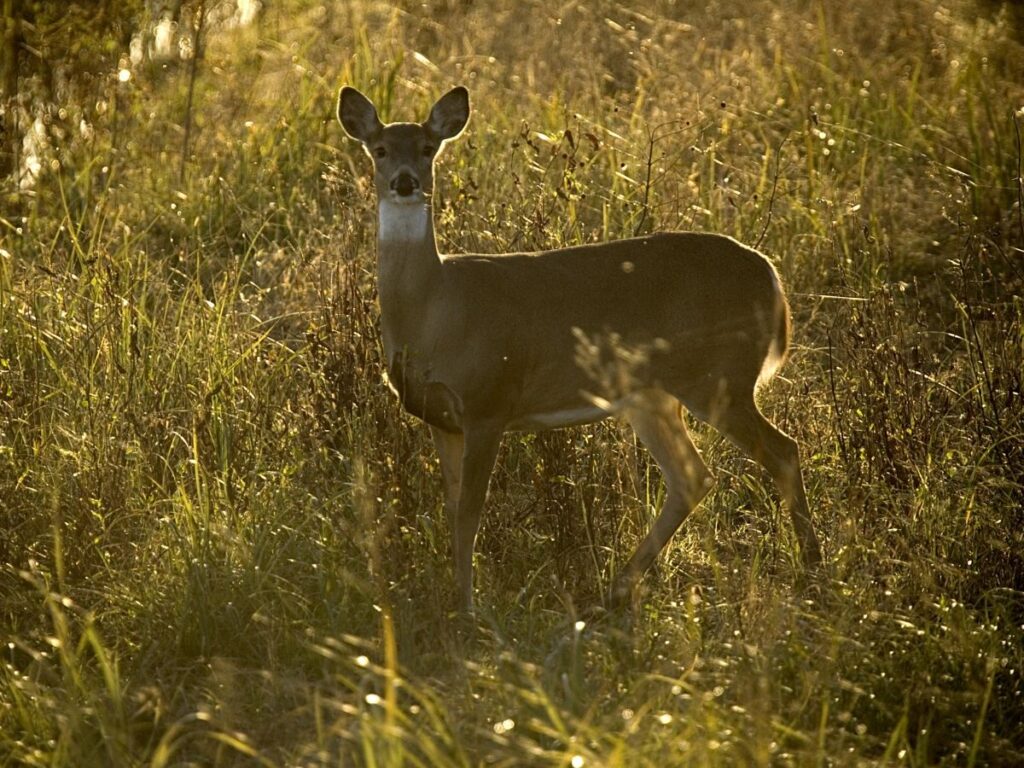Hunting is one of Texas’ oldest traditions. And with many landscapes across, there are also a vast amount of wildlife species. Animals like bobwhite quail, white tailed deer, Rio Grande turkey, pronghorn, and countless species of waterfowl can be found and hunted in Texas.
As the population of Texas grows and cities sprawl, wildlife is driven out of their native habitats. That’s why it’s important to implement land management tactics that protect and create native habitat areas for these animals to live.
White-tailed deer
White-tailed deer are found throughout Texas. Through Southeast Texas to the Guadalupe Mountains in the Trans-Pecos region.
Deer primarily eat understory flowering plants or forbs. To enhance the white-tailed deer population management tactics like prescribed burning, understory management, SMZ implementation, and creating food plots are a good starting point.
Bobwhite quail
Bobwhite quail are primarily found in grassy prairie areas in the western half of Texas from the Panhandle region to the Rio Grande Valley.
Bobwhite prefers areas where around 50% of the ground is exposed and 50% of the ground is covered in herbaceous or woody vegetation. Four important types of cover for nesting, roosting, feeding, and escape cover are:
- Grasslands
- Agricultural fields
- Brushy areas
- Woodlands
To promote grassy areas with a considerable amount of cover and bobwhite quail populations, land management practices like prescribed burning, thinning, and strip mowing should be used.
Implementing food plots can be an effective way to grow a huntable quail population. Food plots are important to quail in the spring and summer season due to their ability to attract insects. Recommended summer/spring grasses include: pearltop millet, American joint vetch, Egyptian wheat, and alyce clover. Winter/ fall grasses include: various clovers, cereal grains, and hairy vetch.
Bobwhite quail prefer to stay on the ground in cover and travel in a covey rather than fly, so there are many different considerations when constructing food plots. Things like distance between plots, size, and vegetative species are all important factors when implementing food plots for quail habitat.
A general rule of thumb is to keep plots under three acres and to place them in eyesight of each other. It is also important to have ground cover within 300 feet of the food plot for the quail to easily access and use as a defense mechanism.
Food plots are usually broken up into fourths with 3/4 of the plots being planted as cool season cover crop and 1/4 of the plot being a summer season cover crop. This way the quail will have a food resource in the summer crops and a bit more shelter and protection in the cool season crops.
However, native grasses and other herbaceous plants should be maintained and improved. The best way to improve a native grassland is by regular maintenance such as prescribed burning, disking, brush hogging, and fertilization to prevent any woody species from invading the grassland and taking over. Usually, a standard rotation for pasture maintenance is three to five years.
Bobwhite quail usually reside in an “edge” area. An edge area can be where a dense wood line meets a meadow or pasture. Mowing/clearing strips in a densely wooded area can be effective for growing a quail population. These strips should be about 40-50 feet wide to create an “edge” area for nesting that is suitable for young quail.
Correct implementation of food plots will increase insect biomass, increase cover for escape routes, and will grow a huntable quail population. Protecting native cool and warm seasonal grasses will also contribute to a healthy quail population.
Scheduling a regular maintenance rotation will increase the diversity of grassland habitat which will make the area more desirable to Bobwhite quail.
Rio Grande turkey
Rio Grande turkeys are the most popular turkey species to hunt in Texas. They are a versatile species and found in the central portion of Texas from the Panhandle to the Coastal Prairies.
These turkeys live in brushy areas of mesquite trees around water sources, other small woody plants, and some larger oak species. Some management practices to promote turkey habitat is to implement SMZs and mechanical treatments of heavy underbrush.
Waterfowl species
There are many kinds of migratory waterfowl species seasonally and permanently in Texas.
Migratory birds use flyways to migrate to the southern hemisphere for winter. The Central Flyway and the Mississippi Flyway both cross through Texas meaning there will be many ducks, geese, and other bird species passing through certain areas of the state.
Maintaining SMZs and creating a healthy aquatic environment is vital for these species. The Natural Resources Conservation Service (NRCS) and the Texas Parks and Wildlife Department can provide knowledge and guidance on aquatic habitat management as well as soil management.
